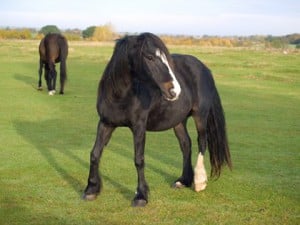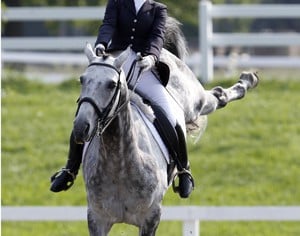Mares are ‘seasonally polyoestrous’, meaning that they have a season in which they are confined to breeding (not all year round), and they cycle several times within this period. The typical breeding season is between May and October but some mares will cycle outside of these months.
The main factor which influences the breeding season is an increase in daylight hours and artificial lighting can be used to induce oestrus. Mares will hit puberty between 12 and 18 months of age, and seasons will continue throughout their lifetime, though they often become less noticeable with age. A single oestrus cycle typically lasts for 21 days, but this varies slightly from mare to mare. Usually there are 5 days of oestrus where the mare will accept advances from a stallion, and this is when behavioural changes are noticeable - as the mare is intent on becoming pregnant, rather than listening to their handler! Behavioural problems that can often occur when your mare is in season include restlessness, and inability to concentrate, poor performance, moody and sometimes nasty behaviour and hyperactivity.
How can you tell if your mare is in season?
Sometimes it can be difficult to know if your mare is having behavioural problems due to being in season, or is just being plain naughty - if one of more of these signs are also there when she behaves badly, a supplement aimed at balancing hormones could make a significant improvement in her behaviour!
- Restless behaviour- the mare may pace the stable/ paddock fence
- Reduced time eating and resting
- Increased frequency of urination
- Elevation of the tail
- Clitoral winking
- Squirting of mucous and urine
- Sensitivity around the flank during girthing and grooming- pulling faces and nipping is common
- Moody and irritable behaviour!
For any advice or questions you may have, please don't hesitate to reach out to our expert nutrition team. You can call 0800 585525 Monday-Friday 8:30am-5:00pm. Email [email protected], or send us a DM on social media.



